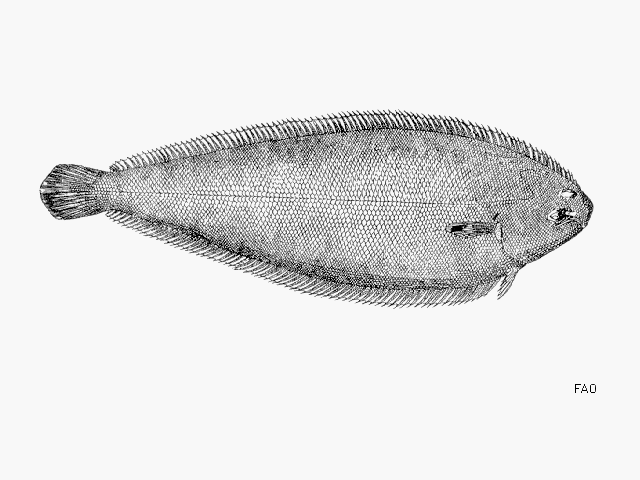|
Dicologlossa cuneata (Moreau, 1881) Wedge sole |

|
|
photo by
FAO |
| Family: | Soleidae (Soles) | |||
| Max. size: | 30 cm SL (male/unsexed) | |||
| Environment: | demersal; brackish; marine; depth range 10 - 460 m | |||
| Distribution: | Eastern Atlantic: Bay of Biscay and the Mediterranean to the Cape of Good Hope, South Africa. | |||
| Diagnosis: | Dorsal spines (total): 0-0; Dorsal soft rays (total): 81-90; Anal spines: 0-0; Anal soft rays: 65-77; Vertebrae: 43-45. Brownish grey with small dark spots; pectorals blackish with pale margin (Ref. 3200). | |||
| Biology: | Inhabits mainly sandy or sand-mud bottoms (Ref. 27121). Feeds on a wide range of small bottom-living organisms, mainly crustaceans, polychaete worms, bivalve mollusks, etc. (Ref. 4710). Oviparous (Ref. 205). Eggs are pelagic and non-adhesive (Ref. 205). Minimum depth reported from Ref. 27121. | |||
| IUCN Red List Status: | Least Concern (LC); Date assessed: 29 June 2021 Ref. (130435) | |||
| Threat to humans: | harmless | |||